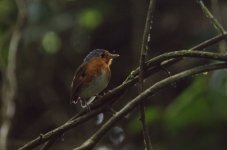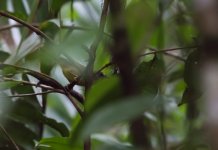Andy Adcock
Worst person on Birdforum

We did it just before it got REALLY bad, there were still queues for petrol but tourist vehicles were allowed to jump to the front so wans't an issue for us. There were army and police everywhere and barely anything in the shops but it has got much worse since then.Venezuela is definitely there but I can't imagine it opening any time soon, if anything, it should be a plus that most of the big targets of Venezuela can be seen in Colombia, Guyana or Northern Brazil (even if all of these spots are painful to get to due to how expensive or rustic they can be). But I would be lying if I said that isn't part of the appeal of birding (not the expensive part, that sucks, but at least there's lifers to be had!).
Africa has always been described by a birder I personally know as "the one place that you can go birding and be distracted by almost anything else because you can't not look at an elephant!". So it sounds like a pretty appealing continent when someone who prefers birding the Neotropics talks so highly about it and regrets not visiting it more often.
Here's a couple you won't get anywhere else and there are plenty more.








